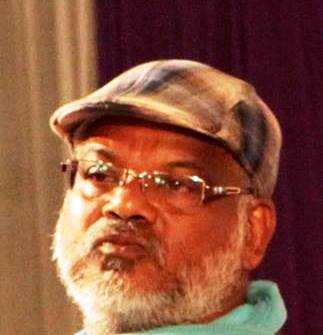Jinping is the man for the moment. Sensing the mood, Jinping has consolidated his authority with an iron hand and political acuity
 Dr. D.K. Giri I INFA Service
Dr. D.K. Giri I INFA Service

With the confirmation of Xi Jinping for the third term, in the 20th Congress of the Chinese Communist Party, the battle lines against the USA are reconfirmed. Contrary to speculations, Xi Jinping may be re-elected but his powers will be reduced, the military and foreign policies may be shared, and Xi Jinping seems to have emerged stronger. Since China opened up half a century ago, no Chinese leader has acquired so much power with no limits to the number of terms in office. What is more, we are witnessing in China the homologation of positions which points to a cult personality, a practice no longer noticed in recent times.
International political analysts like to point out that resistance to Jinping’s autocratic style exists in places like Hong Kong, Tibet, and Xinxiang, and it will grow. That perspective merits a debate and maybe, dissent can be exacerbated and exploited by China’s adversaries like the West in the future. But as of now, Xi’s footprint coincides with those of China. The prevalent political mood represented by Jinping consists of a few ambitions. One, China wants to collect political dividends for its economic successes. It needs to be more assertive internationally. Second, the Chinese dream is to become a world power. Beijing seeks to supplant the US as the numero uno in world politics or share the leadership space.

Xi Jinping has convinced his colleagues that the US is in an irreversible decline as a world power. And Beijing can fill the void. Third, Chinese leadership believes that their system is better for economic growth, political discipline, social security, etc, and they should put forth their system as a viable and replicable option for the world. In order to fulfill the aforesaid aspirations, China wants a strong man who controls and reassures citizens. Jinping is the man for the moment. Sensing the mood, Jinping has consolidated his authority with an iron hand and political acuity. He has eliminated most of his opponents by implicating them in corruption scandals. At the same time, he put his men in leadership positions – from the army to propaganda, and from security to data management, etc.
The implications of the concentration of power in the hands of Xi Jinping are two-fold – national and international. Domestically, China has become, from a one-party to a one-leader country. Internationally, Beijing increasingly prefers greater assertion and continued claim to a world power status to an approach of maintaining a low international profile while steadying its economic growth. This trend has been evident in recent times as Beijing has been making stronger claims to territories and mineral rights in places like the South China Sea and traditional Japanese Islands. These claims have alienated East Asian countries like Vietnam, the Philippines, South Korea, and Japan which are aligned with the USA in security terms while accommodating China on limited trade and investment.
This is the stark and hard choice many countries have to make, between USA and China. In doing so, there are at least three strategies adopted by different countries. One is hedging, which is no longer viable. As the competition between the two big powers intensifies, countries will have to make a choice between security and trade. They would need the USA as an international guardian to defend their territorial integrity and political sovereignty etc, although they realise that China has grown too big to be ignored.
The second variable is how countries like to play their respective world roles. They will be ‘contributor’ to a world order or ‘recipients’ of what is being shaped in other words, shapers or takers. Many middle-power countries like Japan, Germany, and Australia will like to be a ‘shaper’ of the world order and hence go with America which claims to be the champion of the free world based on democracy and all the political and human values that go with it. That is why these countries have formal security treaties with the USA.
Interestingly, countries like Australia take a hybrid approach as they need both, the security provided by the USA and the trade with China. Although Australia has made it clear that security and rule-based world order will take precedence as political sovereignty or territorial integrity is threatened.
The third variable in building concrete partnerships is the ‘reliability’ of the USA as an international guardian. The US’s reputation as a trusted ally and of its staying-power as a defender of democracy is not strong. Also, can USA push China back to the position of status quo – a big market with no international political ambitions? Many analysts contend that USA could not deter China without imposing real heavy costs.
Where does India stand between USA and China? New Delhi has been hedging in the name of neutrality. It has been non-aligned between USSR, now Russia, and the USA. But it is a different ball game with China, especially when China is a border country occupying and demanding Indian territory. New Delhi likes to hold on to its strategic autonomy and has been hedging in the Sino-US conflict, perhaps conscious of the other two variables – the shaper/taker position in which India is perceived to be a hybrid partner. It goes with the USA on security arrangements like Quad and with China on economic groupings like BRICS and SCO. And the other variable India is wary of is US’s reputation as a trustworthy ally. Obviously, the USA has been going back and forth on partnerships with Pakistan, Afghanistan, and others, even with India and China.
Admittedly, many countries are wanting to retain their strategic autonomy – South Africa, Brazil, Chile, etc for example. Such stances remind us of the non-aligned movement (NAM) created in the 1960s by India and others, immediately after the decolonisation process began. I have maintained in my writings, and in this column that it was an unviable strategy in an interdependent world that later began globalising. However, this strategy can be recalibrated as an ‘Alliance of the Progressives’, in actual terms, Alliance of the Non-Aligned. Since the latter term is an oxymoron, the former terminology is preferable.
What it means in practical terms is that the alliance of the progressives will be both dispositional and situational corresponding to a country’s political values and to its legitimate national interest. India very well fits into this formation – ‘the third way’ in international politics. This is certainly not the way of neutrality or abstentions in the United Nations in the name of strategic autonomy. Alliance of Progressives will enjoin upon in open a country to speak up for progressive values irrespective of whichever country is offended by them.
These values are defined in discourses and shared among allies. Such values could include freedom, equality, justice, identity, dignity, pluralism, solidarity, etc., and others that may be commonly conceived from time to time and agreed upon. In the alliance of progressives, the national interest of a country will not be downplayed; it would be jointly defined among allies, not by a country alone leading to conflict with other countries. Let India be a leading part of the third way, reformulating the strategy of non-alignment it initiated decades ago. The third way is certainly worth exploring. —-INFA
Advertisement



